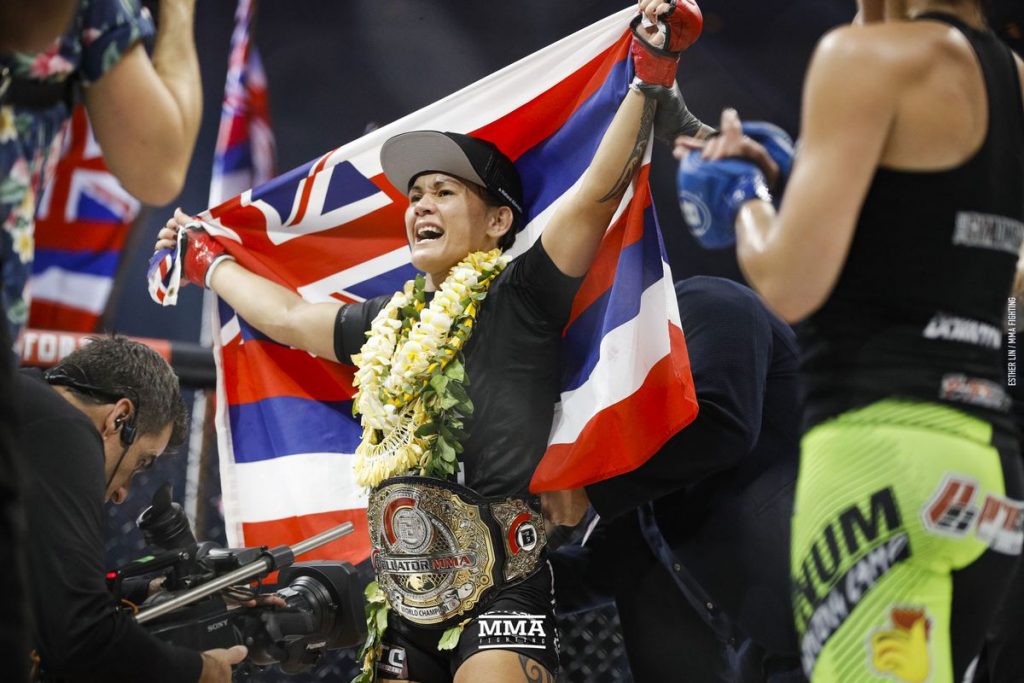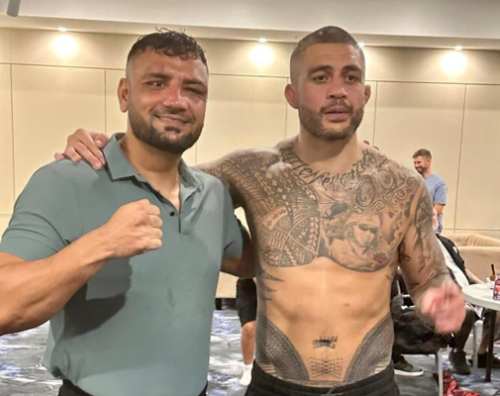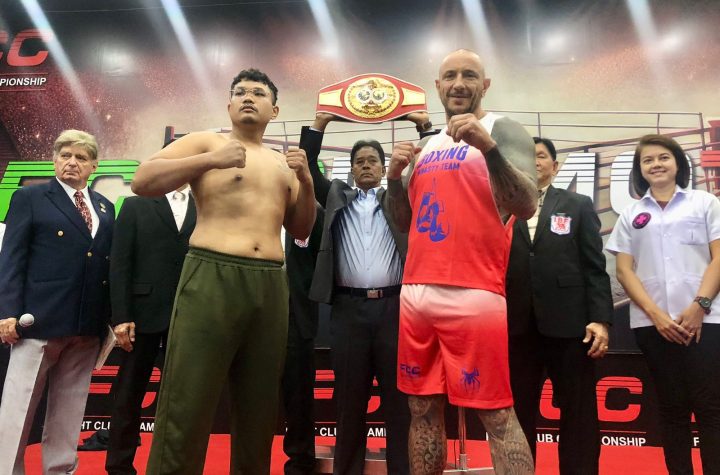
On a weekend with two major Bellator shows, and the last UFC show on broadcast network television for the foreseeable future, it was very much the end of the old and the beginning of the new.
Very quickly into the UFC show, the departure from FOX was mentioned. The UFC put together videos of fighters thanking FOX for seven years of growing the sport.
When UFC debuted on FOX in 2011 with the Cain Velasquez vs. Junior Dos Santos heavyweight title fight, which peaked at nearly 10 million American viewers, there were a lot of hopes of how big the sport was going to grow with regular network prime time shows.
And in many ways, it did. But that number, thought to be a building block for the future, ended up a figure never even approached again. The reality was, partially due to a major increase in the number of events somewhat watering down the product, and the decline in network viewership overall, in recent years the FOX specials were drawing less than many of the major live shows used to draw on Spike.
Still, being on FOX had its value. The prestige was such that UFC’s stars became more acceptable as major sports stars and silly questions about MMA not being a sport and being some barbaric activity have largely gone away. The ceiling for major pay-per-views grew as well.
FOX didn’t, as hoped for, instantly create new superstars or even build talented fighters into pay-per-view stars.
The beginning of the new was Bellator’s second DAZN exclusive show, the second of two events held on consecutive nights in Honolulu.
With the UFC, no matter where the show is from, it largely looks and feels the same, with the only difference being the unique-to-culture chants from crowds. The Bellator shows had a very different atmosphere, with the announcers in their Hawaiian shirts.
But nothing spelled out the difference in the feel of Bellator in Hawaii and the UFC than the cage entrance of Ilima-lei Macfarlane, Bellator’s women’s flyweight champion. Macfarlane, a Honolulu native, was who the weekend was built around.
:no_upscale()/cdn.vox-cdn.com/uploads/chorus_asset/file/13629692/104_Ilima_Lei_Macfarlane_x_Valerie_Letourneau.jpg)
Macfarlane herself designed an elaborate and memorable walkout, with four men holding Hawaii state flags in native garb and doing chants. At the same time, an enthusiastic sold out crowd at the Neil Blaisdell Center saw photos of her from childhood to her fighting career on the screen. It was the arena where she won her state wrestling championship in high school and has been the main home of indoor sports on the island for more than 50 years.
The crowd was a mix of tears, including Macfarlane, before the fight started. As she came out, it was a building full of people standing and taking cell phone photos. Television created an emotional visual that everyone in entertainment strives to create, but rarely comes close.
Scott Coker compared it with the atmosphere of the Frank Shamrock vs. Cung Le fight that he promoted more than a decade ago in San Jose. But really, the closest comparison would be the video Pride put together in 2005 for Mirko Cro Cop’s walkout prior to his fight with Fedor Emelianenko at the Saitama Super Arena.
”It was amazing,” said Coker. “When we do the walk-ins, we just say, `Look,you guys have the ability to express yourself, and do what’s important for you, and build your brand. ‘You can tell that her culture was important to her, and Hawaii was important to her. It was entertaining. I loved it. I loved that the crowd knew all the chants and everything. It was just a magical night. I can’t explain it. You had to be here to feel it.”
The reaction was so impressive that Coker wants to make the NBC Arena a regular stop on the Bellator circuit.
With the loud crowd, sounding both younger and with more of a female sound than is usual at an MMA event, cheering her on, Macfarlane retained her title over Valerie Letourneau.
To anyone who watched, this was that rare superstar moment, like Ronda Rousey’s win over Liz Carmouche, Conor McGregor’s win over Chad Mendes, Georges St-Pierre’s win over Matt Serraand Matt Hughes or Jon Jones’ win over Shogun Rua. Now, it is completely unfair at this stage of the game to put Macfarlane in the same category as the greatest stars in the sport’s history and their breakout nights. But the emotion in the crowd at the end of those fights was very much the same.
”This was something that will be memorable as a fight promoter,” said Coker after the show. “This was a magical environment, and I think you guys saw the power of Hawaii get behind her. There’s a couple of times in my life I felt that. And I’ve been doing this a long time. So, it was a magical night, and they love her here. She’s going to be a big star here.”
While Macfarlane, if she has a long run as a top star, could be Honolulu’s version of what Cung Le was in San Jose in a different generation, there was a reality.
The fight, being on DAZN and not Paramount, didn’t have the number of viewers for it to actually be the elusive creation of a superstar past the 50th state. It had every element of what would be that, except people seeing it.
In checking the reaction, I saw those in the MMA press reacting like most viewers would, but the mainstream reaction from fans really wasn’t there. Macfarlane didn’t even place in the Google trends that night. It may have been the emotional high of a huge night of fights to the people who watched everything. But to the public-at-large, it was Canelo Alvarez, Al Iaquinta and Edson Barboza that were the talk of the night.
Unfortunately, in being the biggest night for the fledgling DAZN service in the U.S., a company bankrolling Bellator with game-changing numbers, the sacrifice was its most emotional moment of the year having limited visibility.
For UFC’s show on FOX, let’s look at how Fortunes Changed for Five stars.
AL IAQUINTA – Iaquinta (14-4-1) took a close decision over Kevin Lee (17-4), not only scoring an upset win, but at least tried to get himself in the cage with the biggest names in the sport.
”Raging Al,” who seemingly walked away from the sport to sell real estate, is suddenly in the thick of things in UFC’s deepest weight class.
After winning, he threw around names like Conor McGregor and Khabib Nurmagomedov, as he should. But the reality for now is that McGregor is unlikely to face him, and Nurmagomedov just beat him earlier this year, even if he took the five-round fight on a day notice.
Of course, McGregor is the dream opponent, as it would be for anyone in any weight class between 145 and 170. Dustin Poirier (24-5), who Dana White has said he’s targeting McGregor for, would be the best realistic choice for Iaquinta if White can’t put Plan A together. Another direction that makes sense given the large audience that saw the last two bouts is Iaquinta vs. Edson Barboza (20-6).
KEVIN LEE – Coming off the loss, the best thing about the division is there are no shortage of alternatives, with Anthony Pettis (21-8) and Justin Gaethje (19-2) opponents that he should be able to headline with.
EDSON BARBOZA – Barboza revitalized his standing after losses to Lee and Nurmagomedov, beating Dan Hooker (17-8) with a performance that people are likely to remember. Iaquinta is the fight to make right now, and Gaethje, because he’s a walking fight of the year machine, should also be considered. Another fight that would come naturally out of Saturday would be with Charles Oliveira (25-8, 1 no-contest).
ROB FONT – Font (16-4), got a clear-cut win over Sergio Pettis (17-5). Pettis, after beating Joseph Benavidez, came into the fight as the No. 2 contender at flyweight, but moved up here, and it looks like he’s going to have trouble with the bigger opponents.
Font came in as the No. 10 contender, and with John Lineker (31-8) needing a new opponent withDominick Cruz injuring his shoulder, he or John Dodson (20-10) would be good tests.
CHARLES OLIVEIRA – At the age of 29, Oliveira broke Royce Gracie’s UFC record for most submissions, earning No. 12 over Jim Miller in a fight that spoke of the life cycle of a fighter. Eight years ago, a 21-year-old Oliveira faced a prime Miller and was submitted in 1:59. Now, Oliveira, in his prime, finished Miller with a choke in 1:15.
Oliveira made noises about moving to 145, a weight he missed four times when it was his home division. Twice he missed by more than four pounds, while he’s gone 4-1 since moving to lightweight. The advantage of 145 is that there are fewer title contenders, meaning quicker opportunity for a title shot. But he had lost three of four in that division while struggling to make weight, before the move.
Barboza, Gaethje or Lee would all make good next opponents for Oliveira, as beating any of them would get Oliveira into tile contention.





More News
Quiñonero fights Verdadero in Resbak 2
Resbak 2 at Malungon, Sarangani Province on July 12
Garde stops Baliente in 1st round in “Resbak”